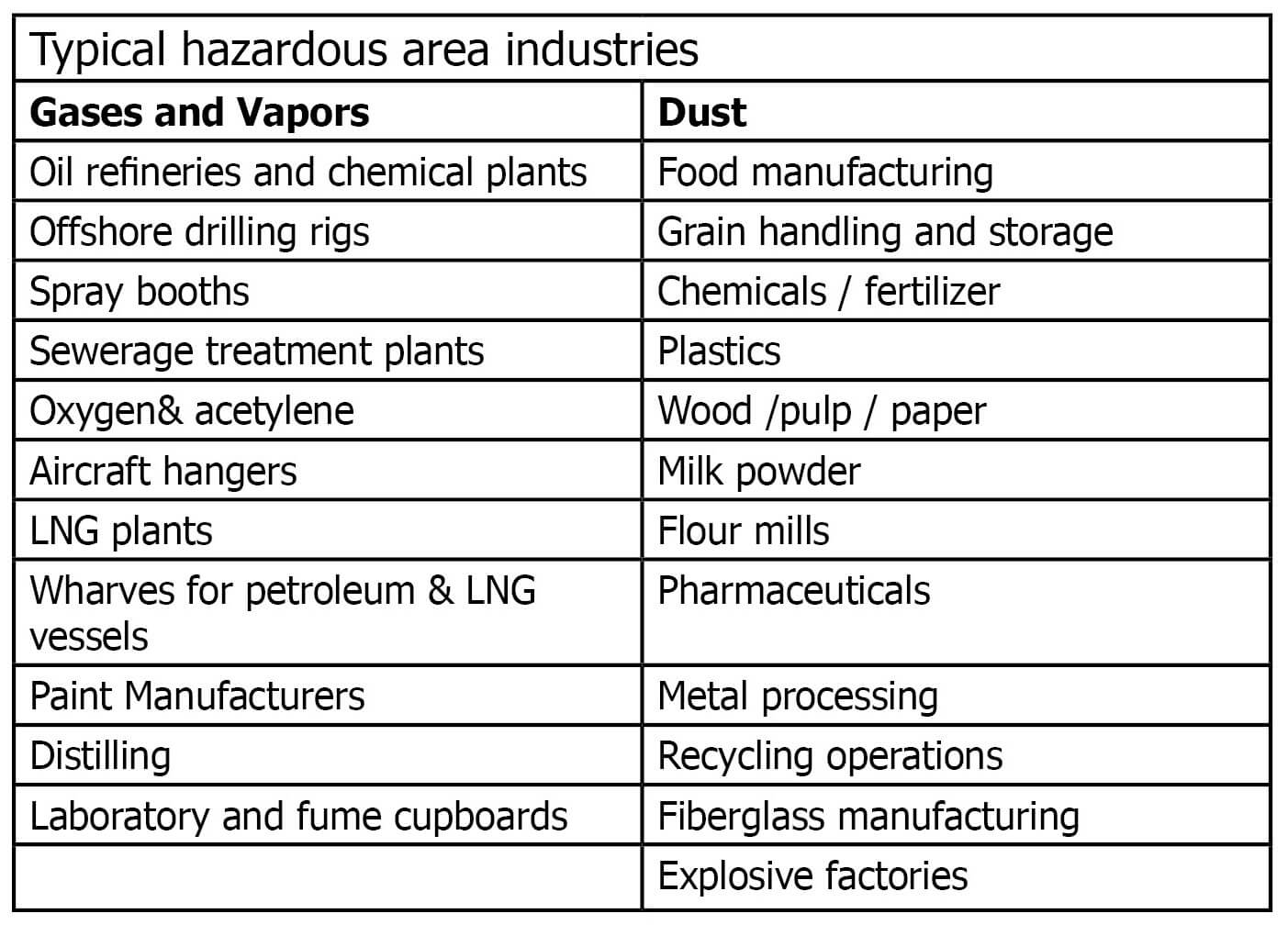The 6-Minute Rule for Roar Solutions
The 6-Minute Rule for Roar Solutions
Blog Article
Roar Solutions Things To Know Before You Get This
Table of ContentsRumored Buzz on Roar SolutionsFacts About Roar Solutions RevealedThe Ultimate Guide To Roar Solutions
In such an environment a fire or surge is feasible when 3 basic conditions are met. This is commonly referred to as the "dangerous area" or "combustion" triangular. In order to secure setups from a potential explosion a method of analysing and categorizing a potentially dangerous area is called for. The function of this is to guarantee the right selection and installation of equipment to eventually protect against a surge and to make certain safety of life.
(https://www.wattpad.com/user/roarsolutions)
No equipment ought to be set up where the surface area temperature level of the devices is higher than the ignition temperature level of the offered hazard. Below are some common dust dangerous and their minimal ignition temperature level. Coal Dirt 380C 225C Polythene 420C (melts) Methyl Cellulose 420C 320C Starch 460C 435C Flour 490C 340C Sugar 490C 460C Grain Dust 510C 300C Phenolic Material 530C > 450C Aluminium 590C > 450C PVC 700C > 450C Soot 810C 570C The possibility of the danger existing in a focus high adequate to create an ignition will certainly differ from area to area.
In order to identify this threat an installment is separated right into areas of risk depending upon the quantity of time the unsafe is present. These areas are referred to as Areas. For gases and vapours and dirts and fibres there are three areas. Area 0 Zone 20 A harmful environment is highly likely to be existing and may exist for extended periods of time (> 1000 hours annually) and even continuously Zone 1 Area 21 A harmful atmosphere is feasible however unlikely to be existing for extended periods of time (> 10 450 C [842 F] A classification of T6 means the minimal ignition temperature is > 85 C [185 F] Hazardous location electrical tools perhaps designed for usage in higher ambient temperature levels. This would indicated on the rating plate e.g. EExe II C T3 Ta + 60C( This suggests at 60C ambient T3 will certainly not be exceeded) T1 T1, T2, T3, T4, T5, T6 T2 T2, T3, T4, T5, T6 T3 T3, T4, T5, T6 T4 T4, T5, T6 T5 T5, T6 T6 T6 A T Class rating of T1 indicates the maximum surface area temperature generated by the instrument at 40 C is 450 C. Presuming the associated T Course and Temperature ranking for the equipment are ideal for the area, you can constantly utilize a tool with a more rigorous Division score than required for the area. There isn't a clear response to this concern unfortunately. It really does depend on the kind of devices and what repairs need to be lugged out. Equipment with certain examination procedures that can not be executed in the field in order to achieve/maintain 3rd party score. Need to return to the factory if it is prior to the devices's solution. Area Repair Work By Authorised Worker: Difficult testing may not be needed nonetheless particular procedures might require to be adhered to in order for the equipment to maintain its 3rd celebration rating. Authorized employees must be employed to execute the job correctly Repair work need to be a like for like substitute. this link New element need to be considered as a straight replacement needing no unique screening of the devices after the fixing is full. Each tool with a harmful score must be reviewed individually. These are outlined at a high level listed below, but for more thorough details, please refer straight to the standards.
The Roar Solutions Statements
The tools register is a thorough data source of devices records that consists of a minimum set of fields to recognize each thing's place, technical criteria, Ex-spouse category, age, and environmental information. The proportion of Comprehensive to Close assessments will certainly be established by the Devices Risk, which is analyzed based on ignition danger (the possibility of a resource of ignition versus the likelihood of a flammable ambience )and the dangerous location classification
( Zone 0Area 1, or 2). Executing a durable Risk-Based Evaluation( RBI )strategy is vital for guaranteeing conformity and security in taking care of Electrical Tools in Hazardous Areas( EEHA).
Some Of Roar Solutions

In terms of eruptive danger, a dangerous location is an atmosphere in which an eruptive environment is present (or might be expected to be existing) in amounts that require special preventative measures for the building, installation and use equipment. hazardous area course. In this short article we explore the challenges encountered in the work environment, the threat control steps, and the called for proficiencies to function safely
These substances can, in certain conditions, develop explosive environments and these can have significant and unfortunate consequences. Most of us are familiar with the fire triangle remove any one of the three elements and the fire can not occur, but what does this mean in the context of dangerous areas?
In a lot of instances, we can do little about the levels of oxygen in the air, but we can have significant influence on sources of ignition, for example electrical tools. Hazardous locations are recorded on the harmful location classification drawing and are identified on-site by the triangular "EX" sign. Below, among various other essential information, zones are divided right into three types depending on the threat, the chance and period that an explosive environment will exist; Zone 0 or 20 is regarded the most dangerous and Area 2 or 22 is considered the least.
Report this page